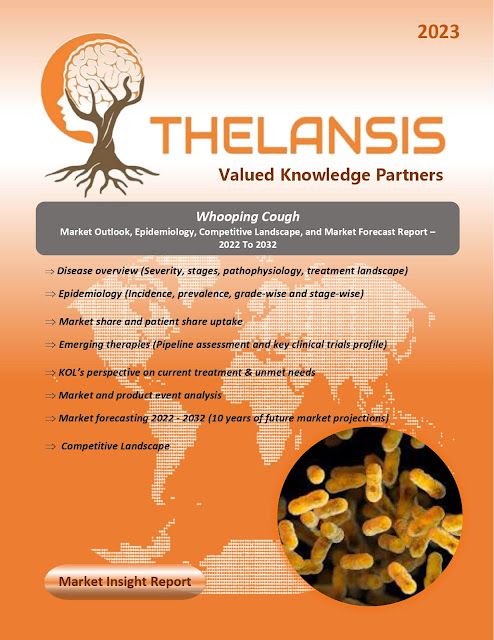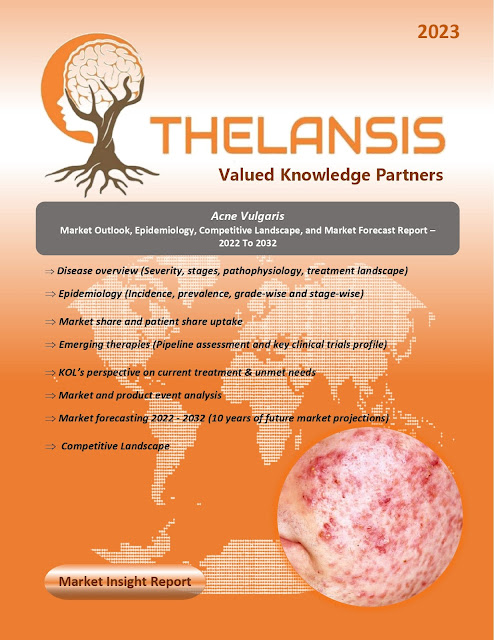Whooping Cough or Pertussis – Market Outlook, Epidemiology, Competitive Landscape, and Market Forecast Report – 2022 To 2032
Pertussis (commonly known as whooping cough), a respiratory infection, is caused by the gram-negative coccobacillus Bordetella pertussis and Bordetella parapertussis. The infection is spread through airborne droplets and is highly contagious, with a tendency to affect 100% of non-immune household contacts. Protection from vaccination may wane to 50% within 12 years of completion, and immunocompromised individuals may also contract Bordetella bronchiseptica, commonly known as "kennel cough." Risk factors for acquiring pertussis include pregnancy, epidemic exposure, lack of immunization, and close contact with an infected individual. The organism adheres to ciliated respiratory epithelial cells, causing local inflammatory changes in the mucosal lining and releasing toxins that act locally and systemically. Pertussis presents similarly to other respiratory infections but has a distinct progression through three phases and a persistent cough without fever. Infants and older adults have higher mortality and morbidity, respectively, with a 2% death rate in infants accounting for 96% of pertussis-related deaths. Most individuals with pertussis will recover, although the illness may last several months. Secondary complications such as pneumonia, seizures, and encephalopathy may occur. Secondary bacterial pneumonia is commonly caused by Streptococcus pneumoniae, Streptococcus pyogenes, Haemophilus influenzae, and Staphylococcus aureus, while viral infections include a respiratory syncytial virus, cytomegalovirus, and adenovirus may also occur.
·
Worldwide, there are over 24 million cases
annually, with greater than 160,000 deaths.
Thelansis’s “Whooping Cough or
Pertussis Market Outlook, Epidemiology, Competitive
Landscape, and Market Forecast Report – 2021 To 2032" covers disease
overview, epidemiology, drug utilization, prescription share analysis,
competitive landscape, clinical practice, regulatory landscape, patient share,
market uptake, market forecast, and key market insights under the potential Whooping
Cough or Pertussis treatment modalities options for eight major markets (USA,
Germany, France, Italy, Spain, UK, Japan, and China).
KOLs insights
of Whooping Cough or Pertussis across 8 MM market from the centre of
Excellence/ Public/ Private hospitals participated in the study. Insights
around current treatment landscape, epidemiology, clinical characteristics,
future treatment paradigm, and Unmet needs.
Whooping Cough or Pertussis Market Forecast Patient
Based Forecast Model (MS. Excel Based Automated Dashboard), which Data Inputs
with sourcing, Market Event, and Product Event, Country specific Forecast
Model, Market uptake and patient share uptake, Attribute Analysis, Analog
Analysis, Disease burden, and pricing scenario, Summary, and Insights.
Thelansis Competitive Intelligence (CI) practice
has been established based on a deep understanding of the pharma/biotech
business environment to provide an optimized support system to all levels of
the decision-making process. It enables business leaders in forward-thinking
and proactive decision-making. Thelansis supports scientific and commercial
teams in seamless CI support by creating an AI/ ML-based technology-driven
platform that manages the data flow from primary and secondary sources.




Comments
Post a Comment